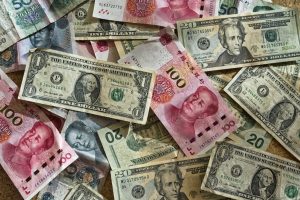Forex trading, also known as foreign exchange trading, is the process of buying and selling currencies from different countries. It has become increasingly popular in recent years, with many people turning to forex trading as a way to make money online. However, like any other form of investment, forex trading is subject to taxation. In this article, we will take a closer look at the tax percentage on forex trading and how it is calculated.
The tax percentage on forex trading can vary depending on a number of factors, including the country in which you reside and the amount of money you make from forex trading. In the United States, for example, forex traders are subject to capital gains tax, which is a tax on the profit made from the sale of an asset. The capital gains tax rate in the United States varies depending on the individual’s income and the length of time the asset was held.
For individuals who make less than $40,000 per year, the capital gains tax rate is 0%. For those who make between $40,000 and $441,450 per year, the capital gains tax rate is 15%. For those who make over $441,450 per year, the capital gains tax rate is 20%. It is important to note that these rates only apply to long-term capital gains, which are gains made from assets held for more than one year. Short-term capital gains, which are gains made from assets held for less than one year, are subject to ordinary income tax rates.
In other countries, the tax percentage on forex trading may be different. In the United Kingdom, for example, forex traders are subject to capital gains tax on their profits. However, the tax rate is only 10%, which is significantly lower than the rates in the United States. In Australia, forex traders are subject to income tax, which is based on the individual’s personal income tax rate. This means that the tax percentage on forex trading in Australia can vary widely depending on the individual’s income.
It is also important to note that forex trading losses can be used to offset gains for tax purposes. For example, if a trader makes a profit of $10,000 from forex trading but also incurs losses of $5,000, they can offset the gains with the losses and only pay tax on the net profit of $5,000. This can be a valuable strategy for forex traders who experience losses as well as gains.
In addition to capital gains tax, forex traders may also be subject to other taxes depending on their country of residence. For example, in the United States, forex traders may be subject to self-employment tax if they are classified as self-employed. This tax is based on the individual’s net income from self-employment activities and is in addition to the capital gains tax rate.
In conclusion, the tax percentage on forex trading can vary widely depending on a number of factors. Forex traders should be aware of the tax laws in their country of residence and consult with a tax professional if they have any questions or concerns. It is also important to keep accurate records of all forex trading activity in order to accurately calculate taxes owed. By understanding the tax laws and taking appropriate measures, forex traders can minimize their tax liabilities and maximize their profits.





